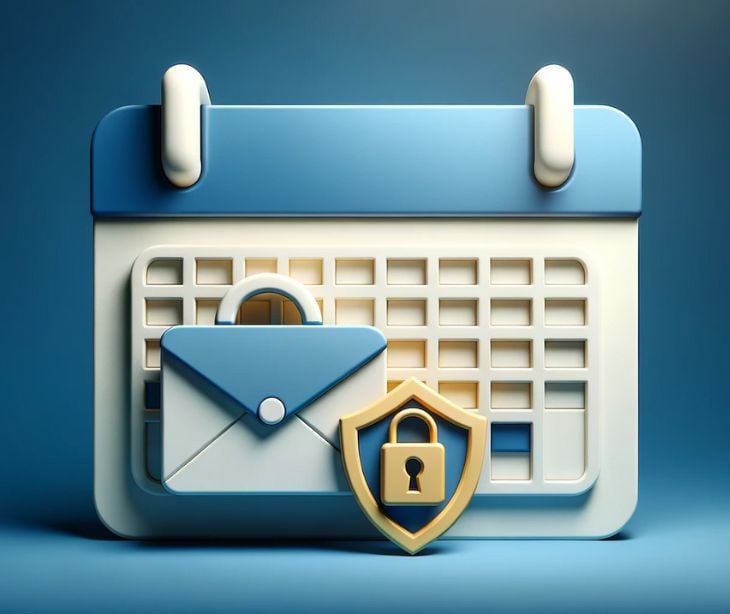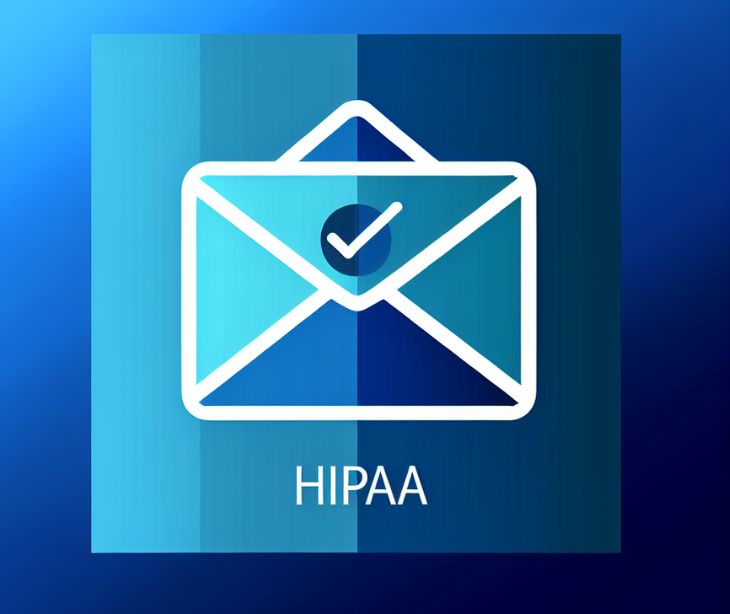5 min read
Using email to reduce information overload during appointments
Tshedimoso Makhene
April 09, 2025

Research indicates that patients often forget a significant portion of the information provided during medical consultations. For example, a study titled, ‘Patients Can’t Recall Half of What the Doctor Said’ by AARP found that patients remember only about 49% of the decisions and recommendations made during their discussions with doctors.
A study titled, ‘Email consultations in health care: 1—scope and effectiveness’, published in the Journal of Medical Internet Research, noted that email communication may support patient understanding, recall, and engagement by providing a written record of medical advice and information that patients can revisit at their convenience. By following up with an email containing key takeaways, additional resources, or answers to frequently asked questions, providers can reinforce important information and improve comprehension. Email provides a structured, documented, and easily accessible means of sharing important information before, during, and after appointments.
The problem of information overload in appointments
The average patient-doctor consultation time is 18.21 minutes, according to a study published by the National Library of Medicine. Within this limited window, healthcare professionals often deliver dense, complex information that can be overwhelming for patients. Many patients struggle to process and remember everything discussed. This can lead to:
- Missed instructions or recommendations: The above research indicates that patients often forget a significant portion of medical information provided during consultations, especially treatment instructions. This can cause improper medication use, failure to follow through with lifestyle changes, and missed follow-up tests or appointments.
- Increased follow-up queries: When patients do not fully understand or remember medical advice, they are more likely to seek clarification, resulting in additional follow-up queries
- Wasted time for both parties: A study titled Quantifying the Economic Impact of Communication Inefficiencies in U.S. Hospitals published in the Journal of Healthcare Management, estimated that U.S. hospitals waste over $12 billion annually due to communication inefficiencies among care providers. In a 500-bed hospital, this translates to losses exceeding $4 million each year. Notably, increased length of patient stays accounts for 53% of this economic burden, highlighting how miscommunication extends hospitalizations and consumes additional resources.
- Reduced efficiency in service delivery: Ineffective communication and poor patient recall significantly compromise patient safety, leading to adverse events and reducing the overall efficiency of healthcare service delivery. A study titled Impact of patient communication problems on the risk of preventable adverse events in acute care settings, published in PubMed, found that patients with communication problems were three times more likely to experience preventable adverse events compared to those without such issues. These preventable adverse events were mainly due to drug errors (40%) or poor clinical management (32%).
By using email effectively, professionals can help clients and patients absorb information at their own pace, reducing stress and improving outcomes.
How email can help reduce information overload
Pre-appointment emails
Pre-appointment emails help prepare patients or clients by providing key information beforehand. For instance, the study Preappointment Surveys and Reminder Calls to Improve Show Rate, published in The American Journal of Managed Care, found that patients who completed a pre-appointment survey were significantly more likely to attend their clinic appointments and spent less time during the visit. Additionally, Paubox reported that providing patients with pre-appointment instructions, such as necessary preparations or required documents, ensures they arrive well-prepared, thereby facilitating more effective and efficient evaluations or treatments.
Pre-appointment emails should be concise, informative, and actionable.
Key elements to include:
- Appointment confirmation details (date, time, location, virtual meeting link if applicable)
- Required documents or forms to fill out beforehand
- Brief explanation of what to expect during the appointment
- Instructions on any necessary preparations (e.g., fasting before a blood test, bringing identification, or compiling relevant documents)
- FAQs to address common concerns
By providing this information in advance, professionals can ensure that clients arrive prepared, reducing unnecessary delays and improving the efficiency of the session.
Agenda sharing
Sending a brief agenda before the meeting can help both parties stay focused.
Based on the article Agenda setting and visit openings in primary care visits involving patients taking opioids for chronic pain, agenda setting was observed in only 11% of the 83 analyzed visits, indicating it is infrequently practiced by resident physicians in the context of chronic pain management. Furthermore, they found that visits that included agenda setting had fewer unexpected topics introduced by patients (mean of 2.67) compared to those without agenda setting (mean of 4.28), suggesting that establishing an agenda may lead to more predictable and organized consultations. This suggests that when participants are aligned on discussion points beforehand, interactions become more focused and structured. Similarly, in professional settings, emailing an agenda ahead of time allows both parties to prepare, prioritize key issues, and minimize cognitive strain during the meeting and ultimately leading to more productive conversations and better decision-making.
Post-appointment summary
Given that nearly half of patients forget crucial medical information after a visit, a well-structured email summarizing the session can serve as a valuable reference.
What to include in a summary email:
- A brief recap of key discussion points
- Instructions or recommendations given
- Prescribed medications, dosages, or next steps
- Follow-up appointment details
- Contact information for further inquiries
- Any attached resources, such as educational brochures or links to relevant information
This approach reduces the risk of misinterpretation and ensures that crucial instructions are followed correctly.
Read also: What are post-care surveys?
Follow-up emails
Sometimes, appointments introduce new information that clients may need time to process. A follow-up email can offer supplementary materials to aid understanding and reinforce key takeaways.
Examples of follow-up email content:
- Links to educational resources (videos, articles, infographics)
- Step-by-step guides or FAQs related to the discussion
- Clarifications of complex topics
- Encouragement to reach out with any lingering questions
- Providing information in digestible formats, such as bullet points or brief paragraphs, helps prevent further information overload.
Read also: How to personalize follow up care emails
Reminder emails
Forgetfulness is a common issue, especially in healthcare settings where follow-ups are necessary. Sending reminder emails ensures compliance with scheduled appointments and necessary actions. The American Journal of Medicine published a study, The Effectiveness of Outpatient Appointment Reminder Systems in Reducing No-Show Rates, that found that implementing appointment reminders decreased no-show rates. Specifically, the study reported no-show rates of 13.6% for clinic staff reminders, 17.3% for automated reminders, and 23.1% for no reminders, indicating that both staff and automated reminders effectively reduce missed appointments
Types of reminders to send:
- Appointment reminders (one week or one day before the appointment)
- Medication or treatment reminders
- Document submission reminders
- Payment reminders for services rendered
Delivering test results and explanations via email
Delivering test results and explanations via email not only improves patient engagement and satisfaction but also plays a key role in reducing information overload during appointments. When patients receive results ahead of time, they have the opportunity to review and reflect on the information at their own pace, which allows them to prepare informed questions and concerns before the consultation. This leads to more focused and efficient discussions during appointments, where the clinician can spend time addressing specific issues rather than explaining every detail from scratch. A study titled Patients' Preferences for Receiving Laboratory Test Results, published in The American Journal of Managed Care, found that all participants preferred to receive their results online, with 82.5% favoring electronic delivery for both normal and abnormal results. While some concerns about confidentiality were noted—around 40% of participants viewed email as more secure than hospital websites—the preference for electronic access underscores patients' desire for timely, convenient, and digestible communication. By leveraging email in this way, healthcare providers can ease cognitive burden during face-to-face interactions, leading to more productive and less overwhelming consultations.
Related: Using HIPAA compliant email to share lab results
Best practices for email clarity
Email effectiveness depends on its structure and clarity. Lengthy, unstructured emails can contribute to information overload rather than reduce it.
- Use bullet points for easy scanning
- Keep paragraphs short and to the point
- Highlight important details using bold or underlined text
- Use headings to categorize information
- Provide actionable steps in a clear, concise manner
An email should serve as a reference tool rather than an additional burden of excessive reading.
See also: HIPAA Compliant Email: The Definitive Guide (2025 Update)
FAQS
Why do patients often feel overwhelmed during appointments?
Appointments can be fast-paced and packed with new or complex information. Patients may struggle to absorb medical terms, instructions, or next steps, especially when they’re feeling anxious or unwell.
Is it secure to send medical information via email?
Yes, but only if proper safeguards are in place, like using Paubox. Healthcare providers should use secure, encrypted email systems compliant with data protection laws like HIPAA (in the U.S.)
Subscribe to Paubox Weekly
Every Friday we'll bring you the most important news from Paubox. Our aim is to make you smarter, faster.



